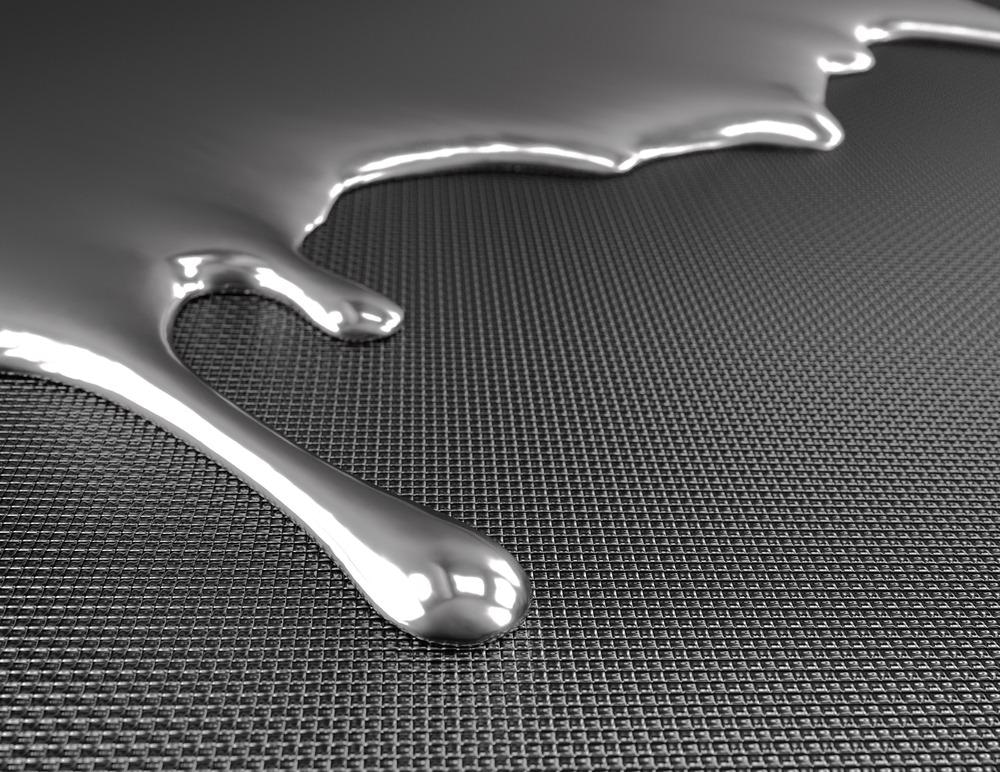The development of an oil-based sustainable solution of conductive silver ink and the enhancement of its film deposition in a substrate are the subjects of new research published in the journal Materials Chemistry and Physics.

Study: Improved stability and film formability of oil-based silver nanoparticle suspensions by addition of polystyrene. Image Credit: Graphic Compressor/Shutterstock.com
Silver nanoparticles (Ag-NPs) were made in water with the introduction of co-stabilizing chemicals oleic acid (OA) and butylamine (BA). Because of the increased connectivity between the lengthy alkyl groups in OA and cyclohexane, the Ag-NPs were more stable in cyclohexane than in hexane.
As a result, the biodegradable silver conductive ink created can be used in a variety of electrical gadgets and printable electronic parts.
Importance of Silver Nanoparticles (Ag-NPs)
Metal nanoparticles (NPs) have been studied intensively for years due to their use as sophisticated multifunctional materials in applications like electronic components, electro-optical industry, bioelectronics, diagnostic devices, nanosensors, and electrocatalysts.
The electromagnetic, photonic, antibacterial, and biochemical capabilities of metallic nanoparticles are heavily dependent on particle size and shape, with a lower particle size being preferred.
Silver nanoparticles (Ag-NPs) are the most desirable metal nanoparticles in many applications due to their high conductance, antibacterial, and anti-oxidative characteristics.
Use of Ag-NPs in Conductive Inks
Ag-NPs have been used primarily in the production of conductive inks, glues, and resins for a wide range of consumer products.
Among these technologies, conductive silver ink has garnered considerable interest, particularly in the printed electronics industry. This is due to its ability to ease operations and lower production costs as compared to standard lithographic and electroless methods.
After solution extraction and thermal processing, conducting silver ink composed of Ag-NPs or their precursors can change into printable designs with conductance. Additionally, a variety of substrates such as glassware, polymers, cellulose, and even paper may be used to create these conducting inks.
Methods for Preparation of Silver Nanoparticles
There are several approaches for the production of Ag-NPs, but the most practical technique is chemical reduction.
Numerous reducing agents can be applied for this purpose, including hydrazine, sodium boron hydride, ethylene glycol, and methanol. When silver compounds are dissolved in water, an appropriate protective agent or bolstering agent is added to prevent Ag-NPs from growing or becoming unstable.
Since many silver accelerators and reductants are soluble in water, it is simpler to produce Ag-NPs in an aqueous medium. However, due to the physical features of the water dispersion particles, such as interfacial tension, fluidity, and polarization, it is challenging to produce a homogeneous thin layer over hydrophobic surfaces.
To address these shortfalls, the inclusion of an organic solvent with coating-suitable physical characteristics is suggested.
A Novel Method for Increasing Film Formability of Ag-NPs
Whenever the conducting Ag-NP toner is applied to the base, the film formability of the Ag-NPs is not as good as expected, resulting in decreased conductance.
The researchers created a biodegradable silver conductive ink for usage on a number of surfaces and industries in this study.
Silver nitrate was used as the metal catalyst, ascorbic acid was used as the reductant, and aliphatic acid and butylamine (BA) were added to regulate particle size and preserve the Ag-NPs formed both in liquid phase as well as in polar solvents.
The use of a suitable organic fluid and a polymeric binder considerably improved the durability and sheet ductility of the pure silver conducting ink on the glass surface.
Research Findings and Conclusion
In this work, silver conducting ink was created by dissolving a polar agent in oleate-capped Ag-NPs in water. Due to the increased contact of monomers, it was found that Ag-NPs were much more durable in cyclohexane than in hexane.
The steric restriction provided by the connected oleate meant that the nanoparticles can remain stable in cyclohexane for more than a year. Additionally, adding PS to the cyclohexane enhanced the ink's hydrophilicity on the glass plate and increased the film's formability and stability while avoiding visible oxidation.
The Ag-NP sheets were shown to be quite pure, displaying only metallic silver XRD features. As a result, the created organic silver conducting ink may be used in a variety of electronic devices and printable electrical equipment.
Reference
Wang, Y., Yang, T., Yang, W., Cheng, T., Chiu, W. and Don, T., (2022) Improved stability and film formability of oil-based silver nanoparticle suspensions by addition of polystyrene. Materials Chemistry and Physics, 282, p.125930. https://www.sciencedirect.com/science/article/abs/pii/S025405842200236X
Disclaimer: The views expressed here are those of the author expressed in their private capacity and do not necessarily represent the views of AZoM.com Limited T/A AZoNetwork the owner and operator of this website. This disclaimer forms part of the Terms and conditions of use of this website.